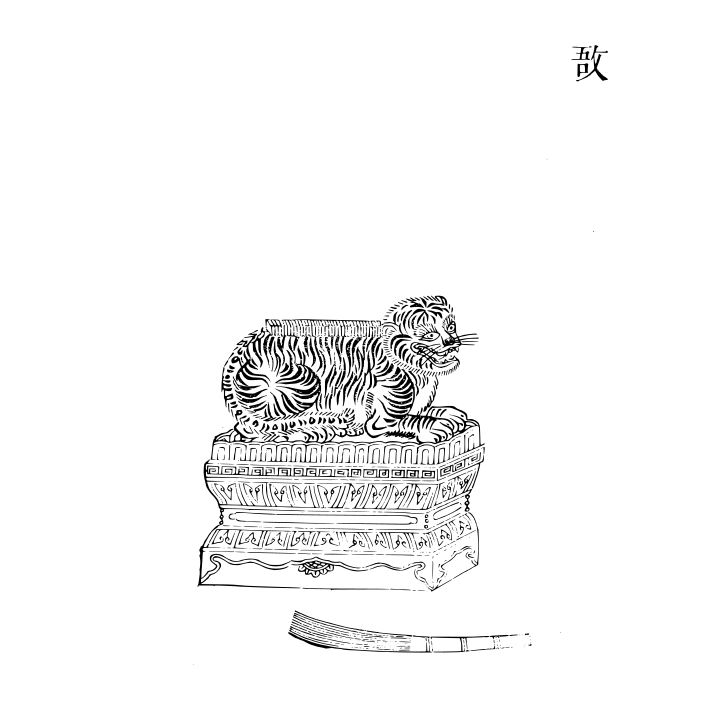yu overview
 Ji (pinyin: yǔ) is an ancient Chinese musical instrument. It is shaped like a subduing tiger, the wood is painted, and there are twenty-seven bows (that is, wood chips) on the back of the tiger. When playing, the performer should stand beside the chi, put the chi on the wooden frame, and make a sound with the zhēn, indicating the stop of the music. It is only used at the end of ancient palace music and sacrificial music.
Ji (pinyin: yǔ) is an ancient Chinese musical instrument. It is shaped like a subduing tiger, the wood is painted, and there are twenty-seven bows (that is, wood chips) on the back of the tiger. When playing, the performer should stand beside the chi, put the chi on the wooden frame, and make a sound with the zhēn, indicating the stop of the music. It is only used at the end of ancient palace music and sacrificial music. Its shape and playing methods have changed over the years. Zheng Xuan of the Eastern Han Dynasty commented on the "Book of History": "It looks like a subduing tiger, with engravings on the back, and it is surrounded by oak, so it stops the fun." Guo Pu of the Western Jin Dynasty annotated "Erya": "It is like a subduing tiger, with twenty-seven on the back. It was carved on the bow, and it was made of wood and long feet of oak." "Old Tang Book·Music Records" records that the Tang Dynasty played: "Break the bamboo to strike its head and scrape it back to stop the music." Nie Chongyi of the Song Dynasty "Three Rites Map" 》In the book, it is stated that "In today's Tang Dynasty, bamboo is two feet and four inches long, broken into ten stems, and the back of the bamboo is horizontal." It is not difficult to see from these notes that the material and design of the bamboo have changed over time. In the early days, there was no special shape. Later, wooden long rulers were used. In the Tang Dynasty, bamboo pieces scattered at the ends were used. In the Song Dynasty, the ends were longitudinally cut into ten segments.
- Pinyin:yǔ
- type:percussion
- alias:peg
overview of other similar instruments
- sanyanxiao overview
- Daguangxian overview
- Leiqin overview
- hahao overview
- yandundagu overview
- Han Xiaozheng overview
- Fang Xiang overview
- guanzi overview
- zhuqin (Dao Qin) overview
- zhuiqin overview
- bangzi overview
- three-stringed piano overview
- Gehu overview
- xiao overview
- xiaokonghou overview
- Konghou overview
- Sheng overview
- suona overview
- hulusi overview
- gushao overview
 渝公网安备 50010702504639号
渝公网安备 50010702504639号